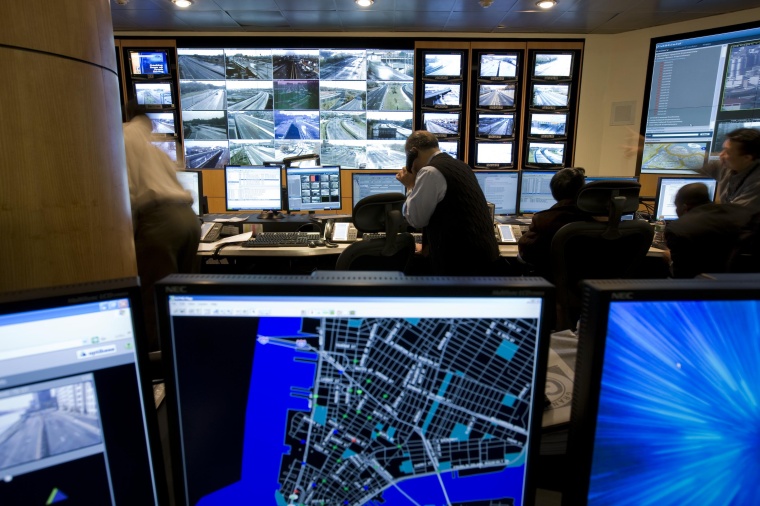Keeping Corporate Campuses Safe
Although 2019 has already begun, organizations are still working on planning and implementing security plans for the year. With 2018 already being remembered as one of the most dif...

Although 2019 has already begun, organizations are still working on planning and implementing security plans for the year. With 2018 already being remembered as one of the most difficult years in recent history for gun violence, severe weather, and other national disasters, corporate campus safety has become a top priority for businesses everywhere.
Corporate campuses present a unique and ongoing security challenge. Organizations must manage localized, detailed processes in addition to a diverse ecosystem of technologies such as access control, identity management, mass notification, video surveillance, inter-campus communications and business intelligence. Many corporate campuses consist of large groups of close-proximity buildings that host employees as well as sensitive customer and financial data, which can lead to concerns about security tactics.
Risks on Campuses
Organizations must monitor a multitude of risks, including insider threats, natural disasters, terror attacks, cyber-attacks and intellectual property theft. To add to this growing data collection and analysis, corporations must also be aware of activities taking place in the surrounding areas near the campus location. In situations where time is of the essence, it is imperative that a potential crisis be quickly recognized so that appropriate responses can immediately be deployed.
Large campuses are particularly subject to a range of security risks. From large events, to multi-building security access and disparate workers, to weather emergencies; there are many factors to consider when securing a campus. Because these challenges can make large campuses easy targets for attack, security efforts must be carefully planned. Integrating technology into this planning can help streamline efforts and make safety measures more effective.
Everyday Communication
For most businesses headquarters, a typical day on-site is largely routine. However, even in times of normality, it’s important to keep tabs on everything that’s going on, in case the day takes an unexpected turn.
Take for example an inclement weather event. These may happen without warning or be worse than initially forecast. Events such as blizzards and hurricanes can directly affect the safety and functioning of a business – not only from a physical infrastructure perspective, but as it relates to employee safety, communication, and more. Having an effective, mass notification system to keep employees and staff in the loop can make a huge difference when it comes to keeping people safe.
Securing Major Events
For many businesses, large training days, corporate events, social functions, partner days, and many other events will take place on-site. During these events, campus security must maintain all normal elements of public safety as well as be prepared for an emergency.
During an on-campus event, security administrators are responsible for using all available resources, tactics and technologies to provide effective security, including collaborating with local police departments. Technology provides access to real-time situational information, which is important to maintaining event security.
Social media monitoring, for example, can play a large role in keeping people secure. Today, event goers often post updates to their social media pages while they attend the event. Security administrators can use AI and automation tools to analyze this information and pinpoint incidents when they occur. Administrators can also use these tools to trigger an appropriate safety response, such as dispatching campus or local police officers to the scene.
When securing large gatherings, campuses must monitor other elements that may impact the occasion in addition to the event itself. When it comes to traffic management for example, having a close relationship with the local police force is beneficial for all parties involved. This ensures that cars and pedestrians get where they need to go as quickly and safely as possible, especially in an emergency.
Expecting the Unexpected
While most on-campus security incidents are, thankfully, routine in nature, we are seeing more and more security threats that have the potential to harm employees. Recent high-profile events have underscored campus security vulnerabilities. From burglaries to suspicious persons/packages, to active shooter situations and other safety concerns, security professionals must be prepared to respond quickly to unexpected events.
Fortunately, today there is no shortage of technological solutions that can help security teams secure a campus before an incident occurs and improve response times when an incident does happen.
For example, campuses may use artificial intelligence to analyze and quickly respond to potential threats. Some converged security and video analysis programs are also beginning to use video detection for facial recognition, as well as gun and license plate detection to gather information about security risks and determine actionable next steps. These technology solutions also allow security administrators to automate operational emergency response procedures.
Safe Campus, Smart Campus
Overall, the availability of technological security tools is improving security efforts, decreasing emergency response times and keeping more people safe. From enabling everyday communications, to managing large events, to aiding emergency response; today, technology on campuses isn’t just limited to cyber – it is used to simplify situation management and create a safer, more secure work environment for employees.
Solution
Converged Security Information Management (CSIM) is a category of software that integrates all security, device and operational data in to one common view; applies intelligence to identify situations; and presents step-by-step instructions for situation management, tracking and resolution that are effective, compliant, and timely. Effective use of CSIM software starts with assessing and identifying an organizations’ risks or in this case the risk of campus surroundings and determining the standard policies and operating procedures (SOPs) for resolving situations associated with these risks. Once this is done, CSIM software connects to the various security and operational systems to monitor events, encapsulates the rules for identifying situations as well as the SOPs for use in the Operations Center. The result is CSIM presents Operators with intelligent, actionable information for resolving situations as they unfold, all while monitoring for compliance to ensure best practices are followed for the safest, quickest and most effective resolution.
Vidsys delivers a very comprehensive CSIM software platform. It integrates multiple physical security systems into one common operating picture and provides the following benefits to organizations. Identifying “true” and “false” situations so energy is spent on the most critical incidents first is a key benefit of the platform. It can pro-actively highlight potential situations based on rules and standard operating procedures whereby automating the detection and resolution of false alarms. It integrates and analyzes information from disparate traditional physical security devices including analog and digital video. Supporting the industry’s most commonly used device types it is easy to integrate and operate.
How CSIM Software Works
It is a force multiplier especially for organizations with a large physical footprint because the software geospatially aligns information and assets into a single user interface. CSIM has five core areas of functionality: it collects, analyzes, verifies, resolves and tracks information. Its rules engine and work flow tools give management the ability to pre-determine what data should be correlated and what should be filtered out. CSIM software uses filtering rules based on time, location, duration, frequency and type.
The software is programmed to identify and present potential situations for evaluation by the command center operator. The organization’s approved con-ops are automatically provided on-screen to ensure compliance and swift resolution. So, when a threat occurs it can be resolved accurately, efficiently and consistently.












